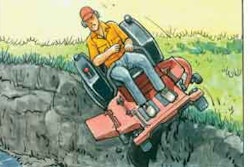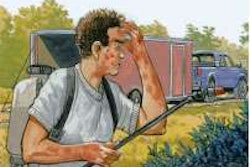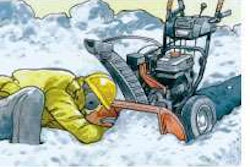Reduce your risk for common hand injuries by following these tips
The accident: A 20-year-old landscaper is trimming hedges in a residential garden when he slips on the wet, uneven ground while walking backward. Upon losing his balance, the landscaper releases the front handle of the gasoline-powered hedge clipper and his left hand comes in contact with the moving blades.
The hand is severely injured, resulting in amputation of two fingers and permanent limited motion in the other three fingers.
The bottom line: The accident report shows the work site was slippery and filled with rocks and mud. The worker was wearing sneakers that may have contributed to his loss of balance. He had the blades facing his body when he slipped. He also had never used a gasoline-powered hedge clipper and was unfamiliar with its operation.
According to the U.S. Bureau of Labor Statistics, 250,000 serious hand, finger and wrist injuries occur annually, and more than 10 percent of all on-the-job injuries involve hand and power tools. Improperly sharpened and maintained hand tools such as knives and clippers can cause serious cuts, and powered equipment like mowers, blowers, trimmers and tillers that have rotating cutting parts can cause cuts, punctures and amputations.
Here are safety tips for protecting your hands and fingers.
• Read and understand manufacturers’ instructions on all hand and power tools before operating them. Your employer should provide operating manuals. If not, request one from your supervisor.
Power tools
• Never operate any power tool for which you have not been thoroughly trained.
• Don’t use power tools in inclement weather.
• Wear sturdy work boots.
• Perform maintenance on equipment only when tools are not in operation.
• Stop all tools such as leaf blowers and mowers before attempting to unclog them.
• Never use fingers to clear debris from rotating parts or to unclog equipment.
• Know when to wear gloves. Correctly fitted gloves should be worn when hands are exposed to hazards that could cause cuts, scrapes or chemical burns or absorption.
• Never disengage safety shutoffs.
• Do not wear jewelry on fingers or around neck when operating or repairing machinery.
• Remove fuses with fuse removers, not fingers, to prevent cuts.
• Do not test the temperatures of gases, liquids or solids with hands.
• Maintain guards on moving machinery parts.
Hand tools
• Make sure hand tools such as hatchets, knives, pruning equipment and machine blades are kept sharp and well-maintained.
• Keep blades pointed down when walking.
• Watch where you are cutting and know where both hands are before you apply pressure to tools.
• To reduce ergonomic injuries, choose a tool that fits your hand properly and allows you to work with a firm and straight grip.












